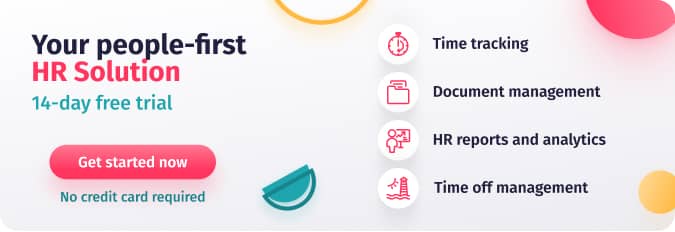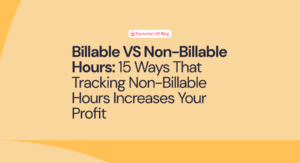

Many business leaders are quickly realizing that providing professional growth opportunities to employees can increase retention rates and satisfaction levels. And one way of helping employees achieve career goals is to use what’s called an individual development plan.
According to a McKinsey study , 41% of participants cited the reason why they quit their jobs between April 2021 and 2021 as due to a lack of opportunities for career development. Making it the top factor leading to attrition, even more so than inadequate compensation and uncaring leaders.
In this article, we’ll first explain what is an individual development plan (IDP). Then, we’ll go over the process of creating an individual development plan step-by-step. Lastly, we’ll include an individual development plan template and examples for you to adapt for your team.
 employee journey map template" width="526" height="526" />
employee journey map template" width="526" height="526" />
Table of Contents
An individual development plan or “IDP” is a framework that helps individuals evaluate their strengths, weaknesses, career goals, and short-term objectives. It is often completed during performance reviews, self-appraisals , or one-on-one meetings and allows employees to self-reflect on their professional growth.
Aside from being helpful for employees, individual development plans can be a useful tool to help company leaders with succession planning and restructuring. It is a great way to support leadership development initiatives, assess skill gaps , and embed better, more transparent communication practices between managers and direct reports . Ultimately, it can help to align individual ambitions with company growth objectives.
Although used for different purposes, creating an individual development plan is similar to the process of creating a performance improvement plan (PIP) . You need to create objectives and a realistic timeframe in which individuals should achieve those objectives. Here, we’ll explain every step in depth.
Like living organisms, companies are continually growing and changing. And, logically, the individuals that make up these teams have goals that are continually changing as well. While creating an Individual development plan, you’ll want to make sure that employees revisit and adapt their plans after set periods.
The first step is deciding how often you want for employees to self-assess and complete the individual development plan. Should it be on a quarterly, biannually, or yearly basis? As a general rule of thumb, it’s best to coincide IDPs with the employee’s regular performance reviews. That way, there’s less confusion and you can ensure that it’s incorporated into their evaluation routine.
Next, you’ll want to create the individual plan itself. Or, if you’d prefer, simply use the individual development plan template that we’ve already created in the next section of this article. For the first portion of the plan, you should include a space in which the employee and their manager can collaboratively evaluate strengths, weaknesses, and overall performance. There should also be room for them to compare the employee’s performance with the expectations of the position.
For this section, be sure to have past performance reviews, skills evaluations, and any other employee feedback records on hand and accessible. You’ll want managers and employees to have a complete picture and reference points to discuss employee progress.
The following space should be designated for the employee’s career growth interests and possibilities. Note, there might be more than one area that captures the employee’s attention. For employers, this can be advantageous because it’s more probable that employees can fill in-demand roles and skill sets through their career growth.
On the other hand, perhaps the employee has a very clear vision of their career goals and ideal position. If that’s the case, employees should think about the skills and qualities that they need to cultivate. For example, if an employee would like to one day manage their team, perhaps they would need to develop delegation and resource management skills.
Next, it’s about making these ambitions concrete through short and long-term goals. Ideally, you want to clearly map out how employees get from point A to point B through measurable targets and focused areas of improvement.
Ideally, long-term goals should be set for the employee’s next 3-5 years in their position, while short-term goals can be set for the next 1-2 years (or even shorter). Keep in mind here that there’s no guarantee that a plan will go 100% unchanged. It’s not always possible to see what is coming next, and sometimes a little bit of flexibility can pay off.
While setting goals, it’s important for employees to consider factors that drive them to succeed. Do they like working on a specific set of tasks or feel especially competent with a certain skill set? If so, it might be wise to have goals that allow them to expand their knowledge of this specific area. The idea is to create goals that are cohesive with their interests and ambitions.
After going through the process of creating an individual development plan, it’s important to measure employee progress toward completing their objectives. If you don’t already have software to keep track of employee goals, be sure to keep individual development plans stored and organized in a shared drive. Both managers and employees should be able to access this document at any time for their own use.
If you’re looking for a more efficient and streamlined alternative, the best option is to invest in OKR software to keep track of employee goals. With OKR software like Factorial, employees and managers alike can visualize progress toward goals through a user-friendly interface. More on this later.
Creating an individual development plan template should be a simple process. Here’s an example template that you can use for your own reference:
| -Company Name- | |||||
| Employee’s Name: | Position: | ||||
| Supervisor’s Name: | Quarter/Year: | ||||
| SECTION 1: Personal statement/Self reflection | |||||
| Strengths: | |||||
Threats to development:

| -Adams Software- | |||||
| Employee’s Name: Jason Williams | Position: Sales Representative | ||||
| Supervisor’s Name: Jeanette Johnson | Quarter/Year: 1Q/2023 | ||||
| SECTION 1: Personal statement/Self reflection | |||||
| Strengths: | |||||
No two employees are the same and neither should be the way that you measure their individual development. With Factorial, you can customize and define OKRs and KPIs for every employee on your team. Don’t hesitate, try Factorial today.

In todays fast-paced working environment it is important for all employers to understand what a discretionary policy is and what its benefits or drawbacks are. [. ]
Lauren Whitford June 19, 2024
Let’s unlock the hidden potential that tracking billable and non-billable hours offers. Its commonly mistaken that you should only track hours that you can charge [. ]